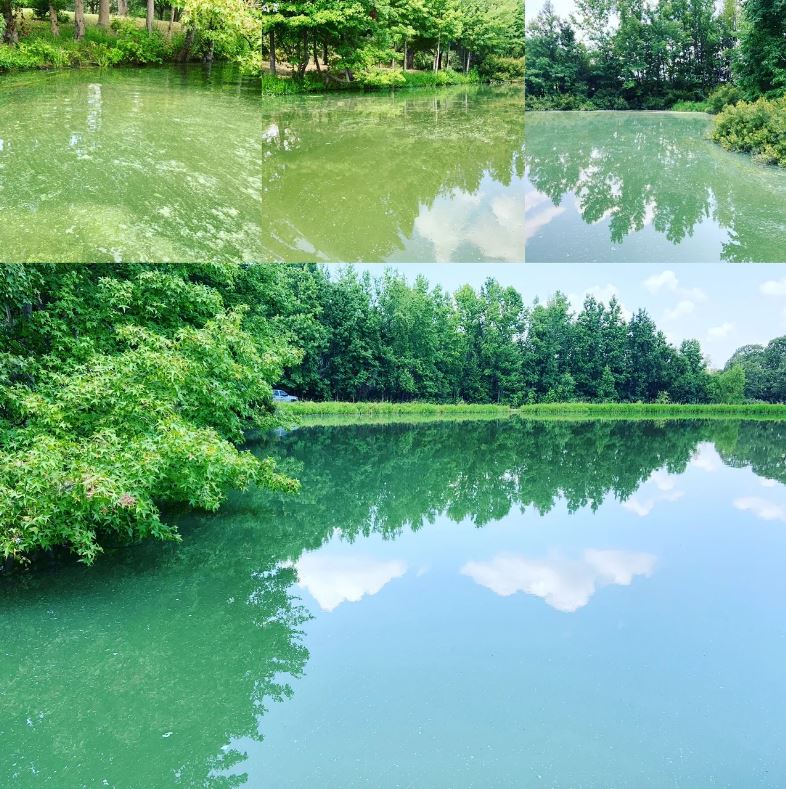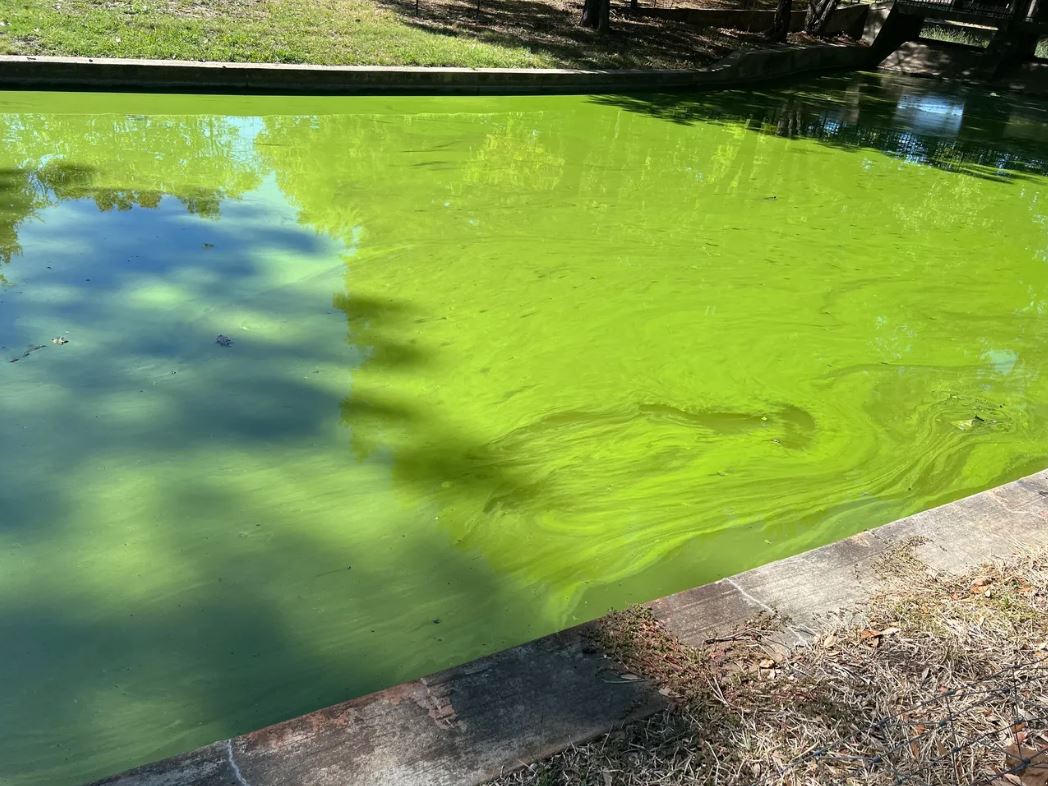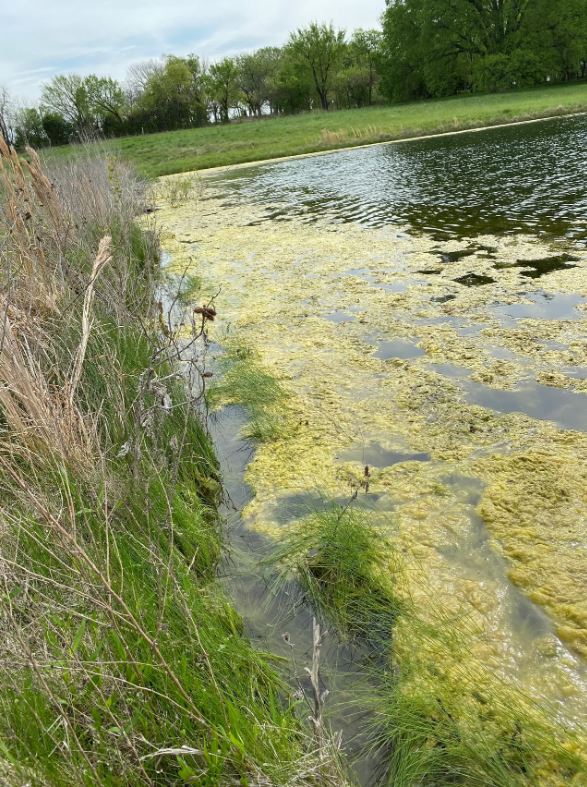3OM AG SOLUTIONS
BLOGFilamentous Algae or Rock Snot
March 8, 2024 | Algae, Lake Management, Pond Management, Water Quality

Excessive Phytoplankton
Algae are photosynthetic eukaryote organisms. Algae are very large and diverse group of organisms, from microalgae to giant kelp. Majority are aquatic by nature, lack distinct cell and tissue types, in comparison to terrestrial vegetation. Seaweeds and Stonewort’s are more complex algae species than their counterparts, such as cyanobacteria and phytoplankton.
It’s no wonder that this species can be problematic to many lake and pond owners. Even during winter months algae is growing even if we cannot detect it, we have seen algal blooms in late January and early February depending on weather events.
The three major algae types are planktonic, filamentous, and macroalgae.
· Planktonic Algae, also referred to as phytoplankton. There are millions of phytoplankton species, ranging from green, blue-green, brown, and any variations between. Phytoplankton is your base of the food chain in your ecosystem. 3 types (many variations) Cyanobacteria, Green Algae, and Euglenoid Algae.

Cyanobacteria
· Filamentous Algae commonly referred as: pond moss, moss, pond scum or string algae. Its name is derived from the long, chains of filaments, and are single algae cells. Filamentous algae start growing on the bottom in shallow water and creates large mats or blobs. Four types: Pithophera, Lyngbya, Hydrodictyon, and Spirogyra. · Macroalgae appear to resemble normal vascular plants, but don’t be fooled. They have no definite root structure and leaf structure isn’t well defined. Two types of macroalgae are Chara and Nitella (stoneworts). Does algae have any management value, short answer yes it does. Like with any ecosystem the simplest forms are the bases of the web and many depend on them. Some use them for food, others use them for hiding and protecting. Like with anything else there must be an appropriate amount, too much or too little will alter the ecosystem. Either way it means something’s out of balance.

Filamentous Algae
It’s recommended to determine what part of your water quality is not optimal for the ecosystem to be healthy. There is many quick test kits, labs, or professionals that can assist in determining what you need to look at and for.
Can you be proactive in your ecosystem management, Yes. Decrease the amount of nutrient runoff, aeration, biological algae controls, phosphate binders (can even be adding in different aquatic vegetation-shoreline), and mechanically remove excess nutrient dense mats of algae.
Treatments of algae should only be done when you have correctly identified the species. Tossing some copper granules in doesn’t all ways work and may make the algae species resistant to the copper.
When in doubt, contact a professional for help.
Joshua Flowers is managing member of 3OM LLC, an ecosystem management consulting company. He may be contacted by email at info@3omllc.com.
Remember your first step is all ways the scariest, but do it anyway.

Contact Us
Ask questions or just say hello! We love to hear from you about what you're cooking and how you're doing. Email or call us, and we will get back to you soon.
ADDRESS:
3OM LLC
PO Box 1408
Mount Vernon, Texas 75457, United States
PHONE:
903-718-0505
HOURS:
Mon 09:00 am – 04:00 pm
Tue 09:00 am – 04:00 pm
Wed 09:00 am – 04:00 pm
Thu 09:00 am – 12:00 pm
Fri By Appointment
Sat Closed
Sun Closed
EMAIL:
Drop Us A Line
